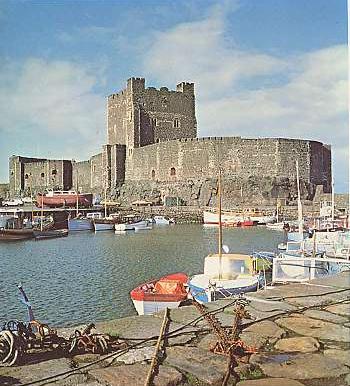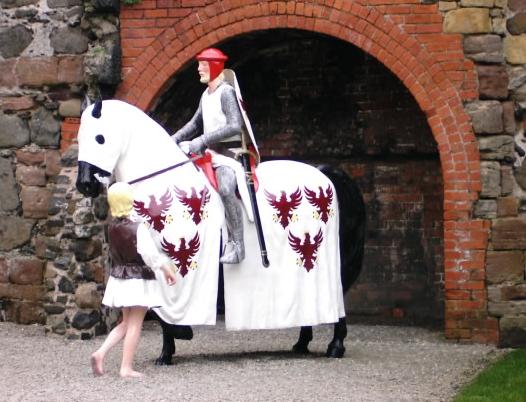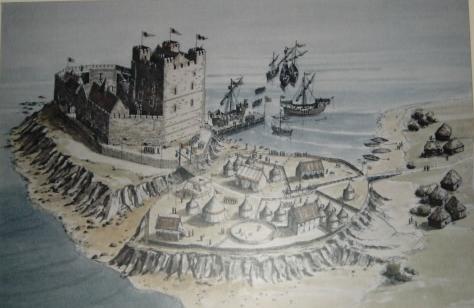Read
about a witchcraft
trial which took place on 31st March 1711 at Carrickfergus. |
||
|
The name Carrickfergus which means
(Rock of Fergus) Fergus's body was washed ashore, one source reports that he was buried at nearby Monkstown, although another relate that his body was taken to Iona for burial. For more information about this incident and also a comprehensive history of Carrickfergus, I can thoroughly recommend the book Carrickfergus A Scroll Through Time by Charles McConnell. It is available at the castle price £3.60. It was from Carrickfergus that the parents of American President Jackson (1829-37) emigrated in 1765. The Andrew Jackson Centre commemorates this important figure in American history. A thatched cottage close to where their original home once stood, beyond the north end of the promenade, traces the family's history. Jonathan Swift, who wrote Gulliver's Travels, was minister of a church near the town. |
||
|
|
The
First Castle. |
||
|
Nothing of any great significance
appears to have happened around Carrickfergus for over six hundred years.
In 1178 its potential as a power base was spotted by John de Courcy's
a Anglo Norman knight who had conquered a considerable portion of eastern
Ireland. He ordered the construction of the Read about Carrickfergus from Samuel Lewis' Directory of Ireland 1837 See also the Normans in Ireland. |
||
|
|
Workers Houses in Carrickfergus.
The
text below is taken from the ordnance survey of 1832 |
||
|
Attached to several of the mills are houses of which a considerable proportion of the work people reside. They are substantially dry, and warm, and neatly kept. The rent is in most instances paid weekly. The others reside in cabins or cottages for which, with a small garden, the rent is generally, indeed almost invariably 4 pounds per annum. The cottages are generally dry and warm, but rather small and kept without regard to neatness or cleanliness. They are in almost all instances built of stone and lime and thatched, consisting of two small and partially separate apartment with earthen floors, one used as a kitchen, occupied during the day by the family, and the other furnished with a couple of scantily furnished beds. Their furnishing is but trifling and indifferent. They are lit by a small lattice or lead window in each. Most of the families employed in the mills keep a few poultry, generally 3 or 4 hens. Each of them keep a pig, but few of them keep a cow. The mechanics or trades people are rather better off, more regular in their habits, more comfortable in their mode of living and inhabit better houses than the former. They constitute, however, but a small proportion of the population. |
||
Read
about Carrickfergus Castle
from the Dublin Penny Journal 1832 |
|

 is derived from an incident which happened about 530 AD, King Fergus
of Scotland suffered from a skin complaint (possibly leprosy) heard
of a healing well in Ulster situated on a large rock outcrop. He was
traveling by galley and had almost reached his destination, when a storm
arose driving the galley ashore and wrecking it near the present day
Carrickfergus,
is derived from an incident which happened about 530 AD, King Fergus
of Scotland suffered from a skin complaint (possibly leprosy) heard
of a healing well in Ulster situated on a large rock outcrop. He was
traveling by galley and had almost reached his destination, when a storm
arose driving the galley ashore and wrecking it near the present day
Carrickfergus, 
 Castle,
it was arguably the strongest and most defensible of Ulster's Norman
castles, the others being
Castle,
it was arguably the strongest and most defensible of Ulster's Norman
castles, the others being